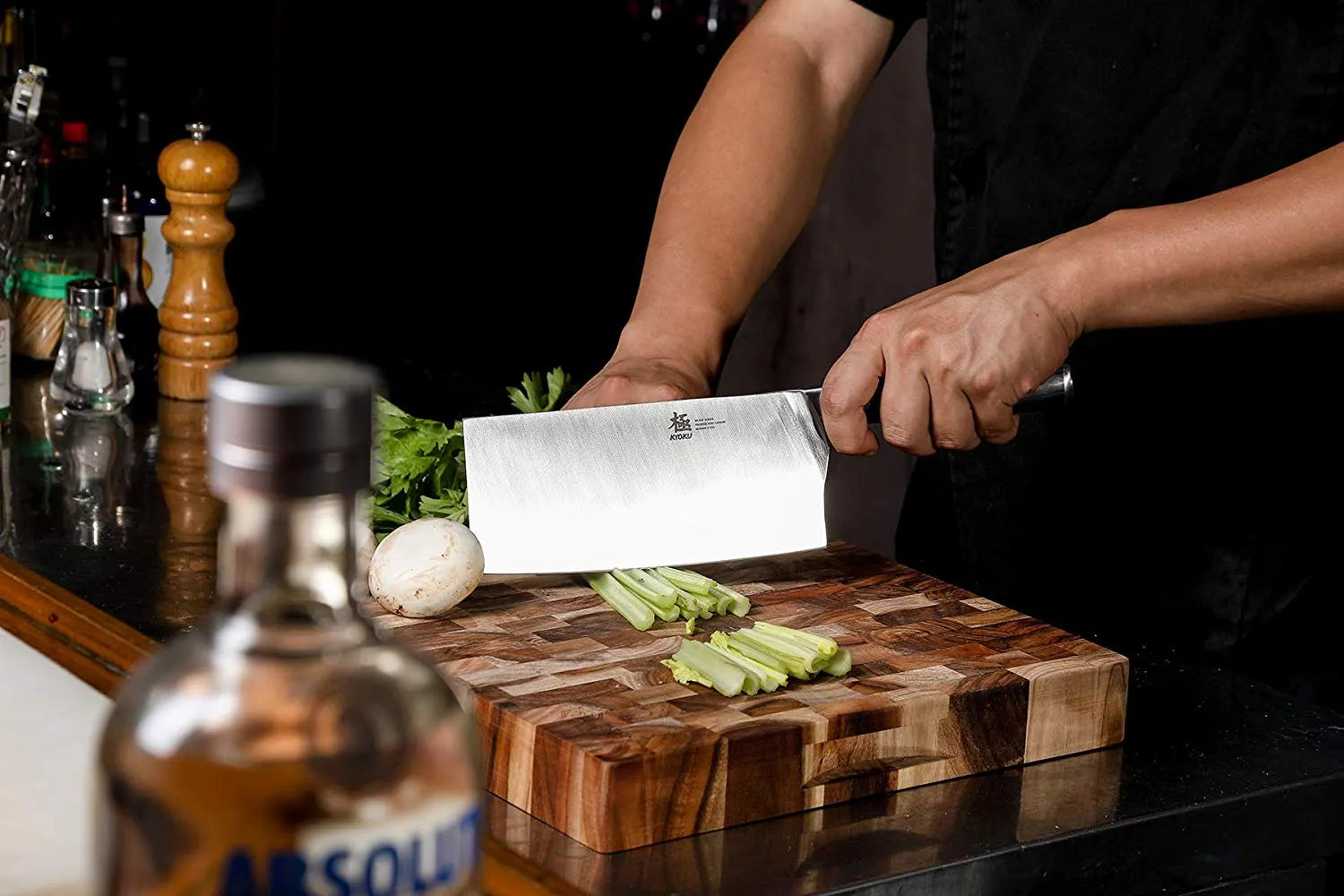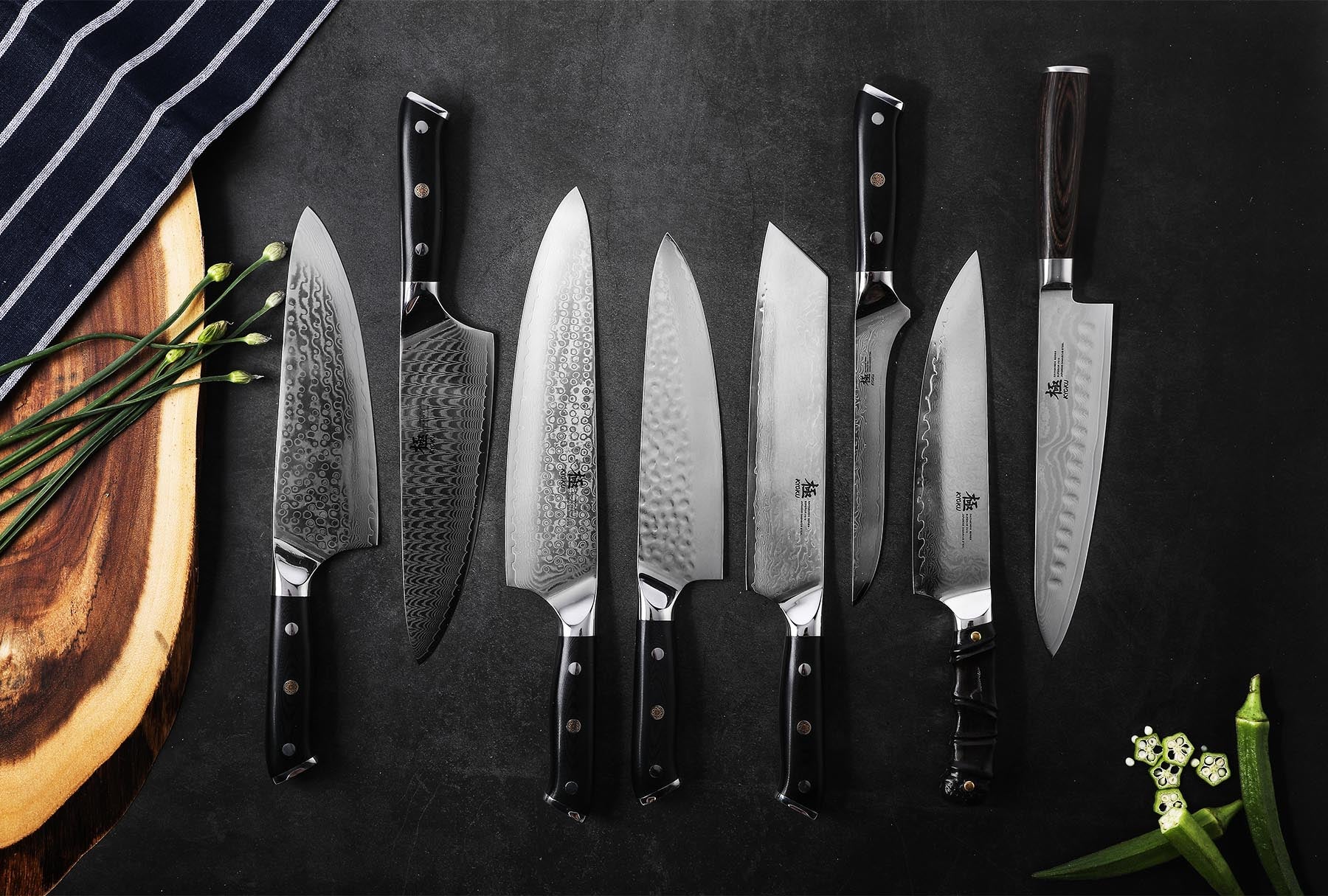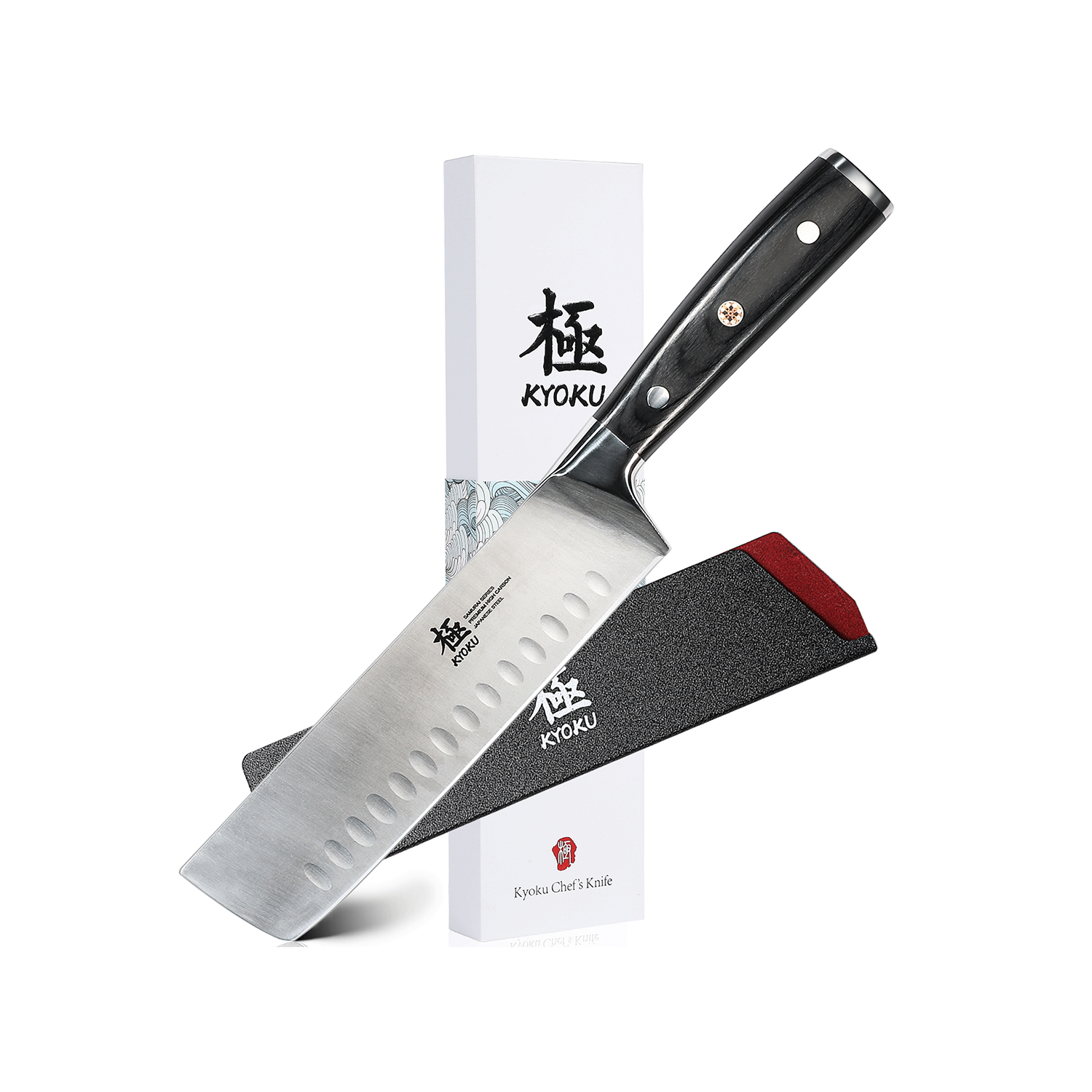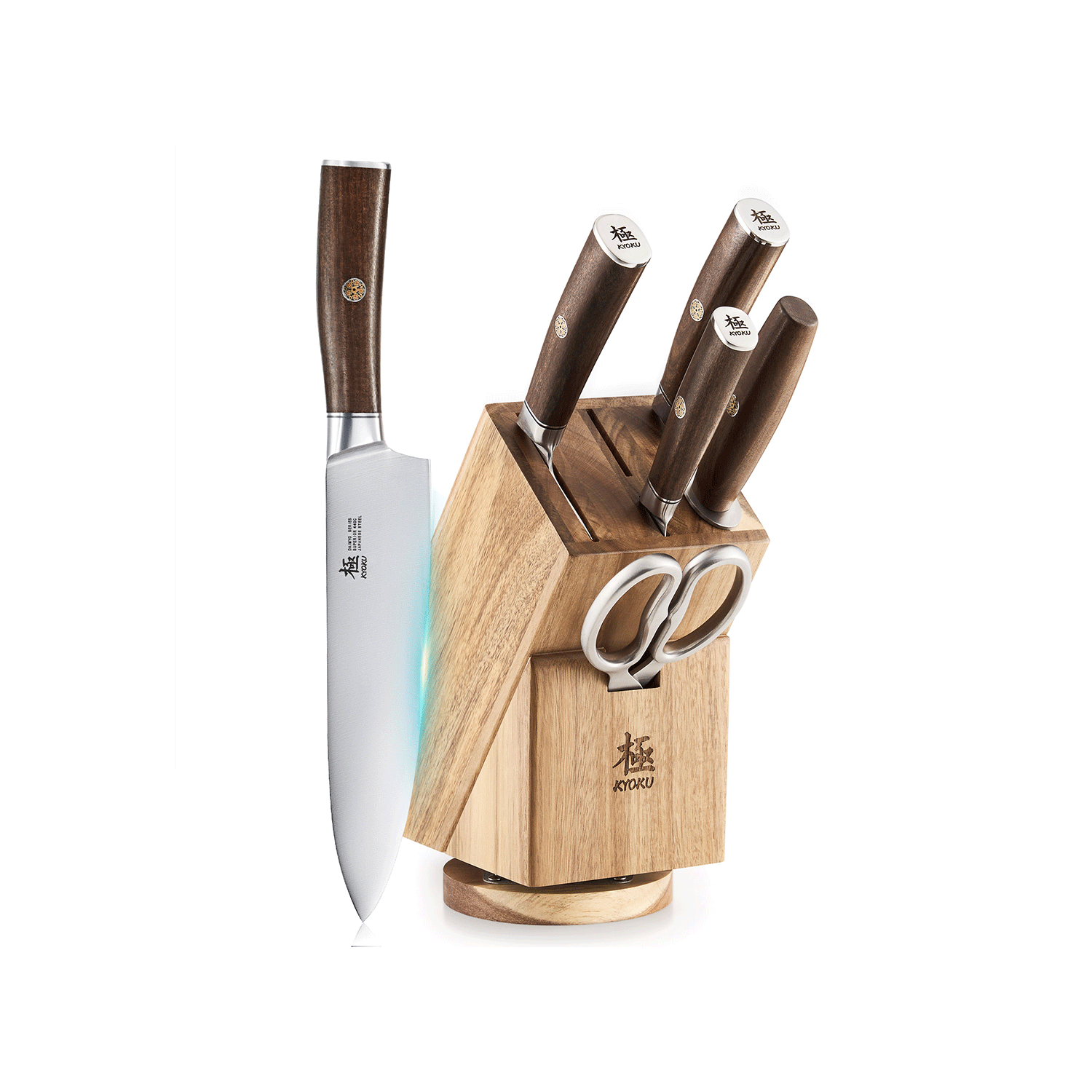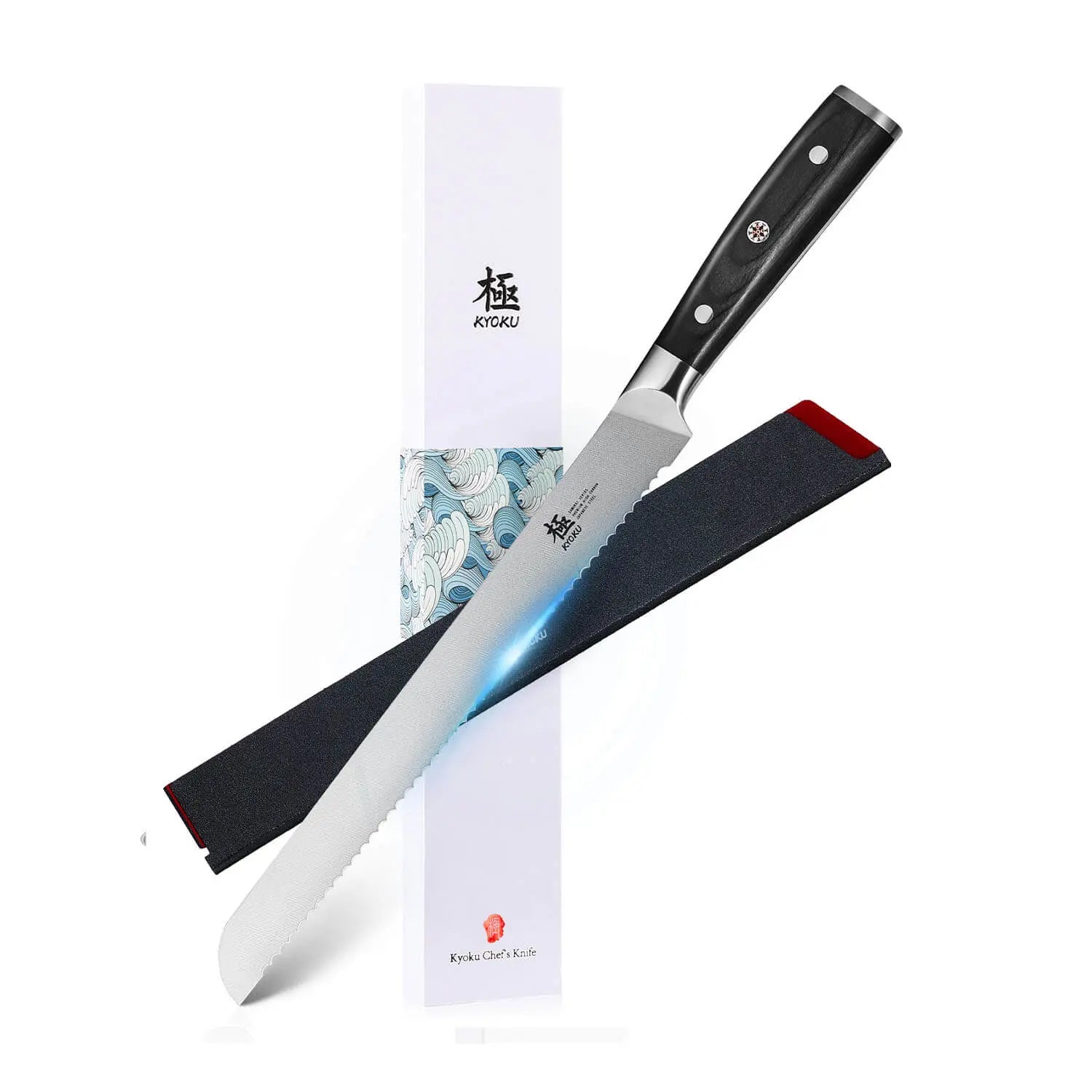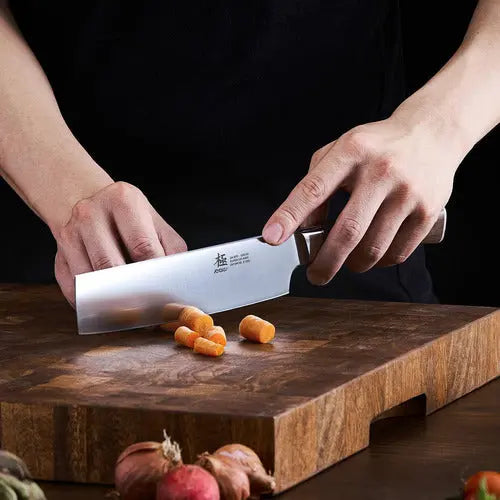Introduction
When it comes to cooking tools, having the right knife can really make a difference. The Nakiri and Santoku knives are two of the most popular knives among chefs and home cooks. They are both from Japan but they are made for slightly different tasks. This guide will explore the differences through the Nakiri knife vs Santoku knife debate, helping you choose a knife that best suits your cooking needs.
What is a Santoku Knife?
The length of a Santoku knife generally ranges from 5 to 7 inches. The blade of a Santoku knife is usually designed to be lighter and thinner, which can enhance its ability to effortlessly slice, dice, and mince. This knife is a favorite in both professional and home kitchens due to its versatility for daily culinary tasks. The several indentations along the blade are also a stand-out feature of the Santoku knife because they can be helpful in preventing food from sticking to the blade.
What is the Benefit of a Santoku Knife?
Versatility: The Santoku knife is suitable for a wide range of kitchen tasks, from slicing vegetables and fruits to cutting meats and fish, making it a versatile knife for both home and professional use.
Precision: Its flat edge and curved tip design allow for precise and clean cuts, which is ideal for delicate tasks like thinly slicing vegetables or finely cutting herbs.
Non-Stick Features: The blade often includes indentations along the edge (Granton edge) which can help to prevent food from sticking to the knife, facilitating smoother and faster cutting.
What is a Nakiri Knife?
A Nakiri knife is designed specifically for cutting vegetables. It boasts a straight blade edge and a squared-off tip that makes it ideal for cutting all the way down to the cutting board. The average length of a Nakiri knife's blade is also around 5 to 7 inches. However, its blade shape is uniquely adapted for its specialized function, providing targeted efficiency for vegetable-cutting tasks.
What is the Benefit of a Nakiri Knife?
Specialized Design for Vegetables: The Nakiri knife is specifically designed for cutting vegetables. Its straight blade and squared-off tip are ideal for making clean, consistent cuts. For example, this particular feature has made the Nakiri knife a favorite for preparing salads.
Precision: With its slim and lightweight characteristics, the Nakiri knife allows for very precise cuts, particularly advantageous for aesthetic presentations.
Efficient Cutting: No need to rock the knife back and forth, thanks to the special form of the blade, which enables cutting all the way down to the cutting board.
Nakiri Knife vs Santoku Knife: A Comprehensive Analysis
Although both the Nakiri and Santoku knives stem from Japanese culinary traditions, their distinct characteristics cater to different cooking preferences. Understanding these differences from this Nakiri knife vs Santoku knife debate can significantly influence a cook's decision when selecting the ideal knife for cooking.
| Features | Nakiri Knife | Santoku Knife |
| Blade Length | Around 5 to 7 inches | Around 5 to 7 inches |
| Blade Design | Generally, a Nakiri knife has a straight edge with a squared-off tip | A Santoku knife usually has a slightly curved blade with indentations (Granton edge) along the blade |
| Best Uses | Primarily designed for cutting vegetables | Versatile; suitable for vegetables, meats, and fish |
| Cutting Technique | Straight up-and-down chopping for precise cuts | Supports a rocking motion for slicing, dicing, and mincing |
Top Picks and Recommendations on the Market
For those in the market for a new knife, whether for a good Nakiri knife or a Santoku knife, the following models from Kyoku come highly recommended for their exceptional quality and performance:
For the Nakiri Knife Enthusiast:
1. 7" NAKIRI KNIVES DAMASCUS STEEL | SHOGUN SERIES
Crafted with high-quality Damascus steel, this Nakiri knife of the Shogun series is ideal for efficiently chopping vegetables due to its thin, flat blade and straight edge. Its handle is durable G-10 fiberglass, which can be suitable for many different kitchen settings.
2. NAKIRI KNIVES 440C STEEL | DAIMYO SERIES
This 7-inch Nakiri knife of the Daimyo series is crafted from vacuum heat-treated Japanese 440C stainless steel, ensuring exceptional durability and performance. Besides, the knife's scalpel-like edge also allows for precise cuts and its handle is rosewood, providing comfort and balance.
For the Santoku Knife Lover:
1. 7" JAPANESE SANTOKU KNIVES DAMASCUS STEEL | SHOGUN SERIES
This Santoku knife of the Shogun series is crafted from 67 layers of stainless Damascus steel, ensuring a blade that is both sharp and durable. It also features an elegant herringbone pattern, enhancing its aesthetic appeal. Additionally, strategically placed indentations along the blade not only improve its visual allure but also reduce the likelihood of food sticking, facilitating smoother cuts.
2. 7" SANTOKU KNIVES 440C STEEL | DAIMYO SERIES
This Santoku knife of the Daimyo series features an exceptional 13-15 degree angled edge and is made from 440C stainless steel, providing both precision and robustness. It is also equipped with a rosewood handle that can fit easily in various kitchen settings. Besides, accompanied by a sheath and case, this knife is not only impressive in use but also simple to store.
Conclusion
Through the Nakiri knife vs. Santoku knife debate, this guide has explored their distinctive qualities and uses, highlighting how each can cater to different culinary needs. Whether you opt for the precise vegetable-chopping prowess of the Nakiri knife or the versatile cutting capabilities of the Santoku knife, your choice should align with your cooking style and kitchen requirements. It is time to get a high-quality Japanese kitchen knife now. Come to visit Kyoku to look for your Nakiri knife, Santoku knife, or more Japanese knife styles!



